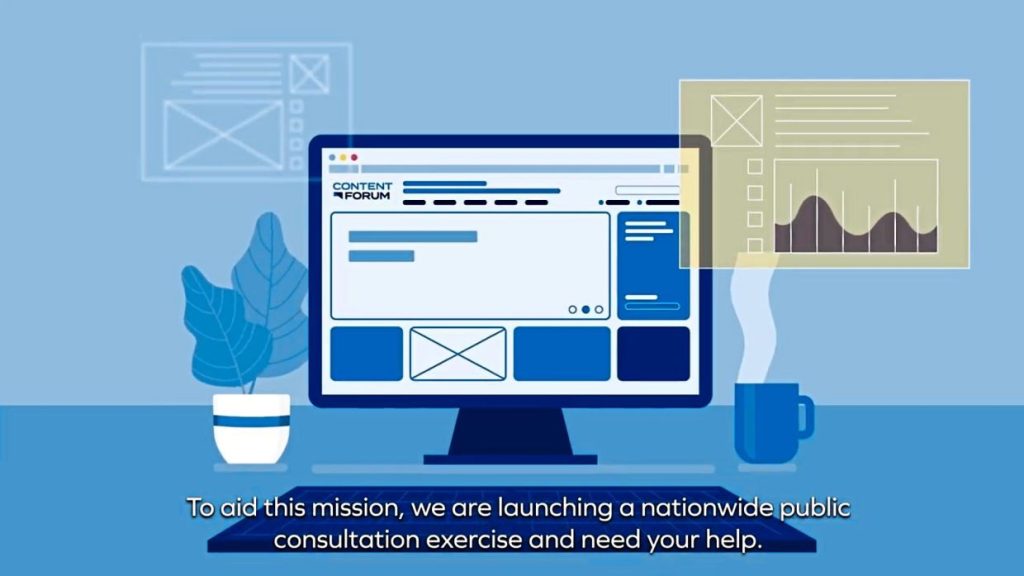
WHILE the Covid-19 pandemic has accelerated digital adoption in all aspects of the lives of Malaysians, it has also brought about new concerns when it comes to online safety.
The growing use of digital platforms for consumerism is a key focus for the Communications and Multimedia Content Forum of Malaysia (CMCF), in its efforts to revamp the Content Code this year.
CMCF executive director Mediha Mahmood said, “It is a holistic revamp that aims to address policy gaps in content regulation to encourage a robust content ecosystem that balances between industry development and consumer protection.”
In essence, the Content Code helps facilitate self-regulation – as a complement to legislation, namely the Communications and Multimedia Act 1998 (CMA 98) – that is vital in keeping up with diverse industries that face continuous innovation and growth, including the communications and multimedia content industry.
“The Content Code is the instrument used to interpret the offences in Section 211 and Section 233 of the CMA 98, such as content that is indecent, obscene, false, menacing or offensive,” she explained.
She added that the Content Code is formulated by the industry and the community and should be a point of reference for everyone, especially since under CMA 98 Section 98(2), compliance to the Content Code shall be a defense against any prosecution, action or proceeding of any nature, whether in court or otherwise.
At present, CMCF is conducting a nationwide public consultation exercise to gather feedback on the proposed revisions to the Content Code.
It has received almost 800 responses thus far, with members of the public given access to the public consultation paper and an option to attend town hall sessions to take them through each proposed revision.
Mediha said, “The more input we get from the public, the more likely the Content Code reflects the standards of Malaysian society, which is the measurement used for us to determine the guidelines and best practices in the Code.”
There are eight key focus areas for the Content Code revamp, namely:
> Online abuse and gender-based violence (GBV) as a form of violent content.
> Enhancing the rights of persons with disabilities (PWD).
> Enhancing the rights of children in advertising.
> Influencers and online market operators as advertisers.
> Disclosures in identifying advertisements by influencers and in paid-for space in news.
> Responsible advertising of intoxicating liquor under strict regulations.
> Prohibition against the exploitation of religion in advertisements.
> Ensuring that Islamic content features only accredited speakers and preachers.
Among the key considerations for the revamp include the growth of influencer marketing in advertising, as a nod to the paradigm shift in advertising on social media platforms.
Influencers have social clout in their communities and have a great deal of power in shaping public opinion and consumer behaviour in pushing the products and services of their advertisers.
“It needs to be highlighted though, that there are irresponsible advertisers out there, who exploit and manipulate influencers to flout advertising rules. For example, pushing products that are not allowed to be advertised on traditional advertising platforms, such as banned cosmetic products or food with dodgy health claims,” she said, adding that some influencers also choose to hide their commercial arrangement with brands with fake and scripted testimony.
Another issue that has led to a couple of the changes proposed in the Content Code revamp is the growing Muslim market and the exploitation of religion through marketing gimmicks.
She stressed, “It is unfortunate that irresponsible parties are tapping onto the growing Muslim market by selling goods or services with ‘Islamic gimmicks’ and misleading consumers with promises of paradise. This phenomenon has not been adequately addressed in the Content Code and is one of the many revisions we propose to make.”
Other enhancements to the current Content Code include the rights of PWD, with the introduction of new provisions to further amplify their rights and interests, especially in terms of accessibility to content.
Aside from that, a timely addition is the inclusion of online abuse and GBV in the prohibition against violent content.
“When people first started going online, the idea of ‘online abuse’ was not taken too seriously. Many said that ‘online abuse’ is not ‘real abuse’, because they feel that a victim can just go offline and protect themselves that way.
“But this is an erroneous belief, especially now that the internet has become essential in our daily lives, where our online presence is an extension of our identity and personality. It is just as important for people that their reputation and honor are protected online as it is offline,” she said.
GBV, which refers to harmful acts directed at an individual based on their gender, can include unwanted sexual remarks, non-consensual posting of sexual media, threats, doxing, cyberstalking and networked harassment from the digital perspective.
She shared, “Online GBV can cause serious harm to the victims as well as to the digital community, by diminishing the validity of human rights on the internet and preventing a thriving, safe and equitable cyberspace for everyone.”
Those interested to provide feedback on the proposed revisions to the Content Code can visit www.contentforum.my.
